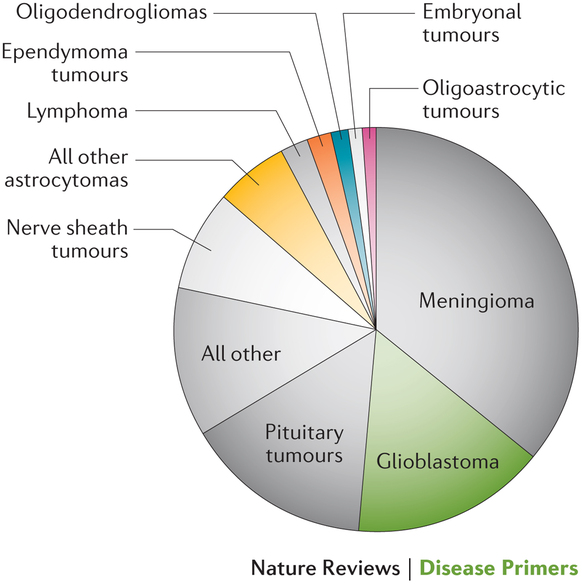神経膠腫
Glioma
2015年7月16日 Nature Reviews Disease Primers Article number: 15017 (2015) doi: 10.1038/nrdp.2015.17

神経膠腫は、神経膠幹細胞または同前駆細胞に由来すると考えられている主要な脳腫瘍である。神経膠腫は、従来から組織学的所見の違いより、星細胞腫、乏突起膠腫、または上衣腫に分類され、また、悪性度を示すWHOグレードのⅠ~Ⅳに分けられていた。遺伝子学、トランスクリプトミクスおよびエピジェネティクスにおけるプロファイリングの驚異的な進歩により、神経膠腫の分類と治療に新しい概念がもたらされた。現在、成人のびまん性浸潤性神経膠腫は、自然経過、治療反応性および転帰の異なる、次の3つの包括的な腫瘍グループに分けられる:①イソクエン酸脱水素酵素(IDH)変異体であり、大部分が乏突起膠腫の形態を有する1p/19qの同時欠損を認める腫瘍で、予後が最も良い、②IDH変異体であり、大部分が星細胞腫の形態を有する1p/19qの同時欠損を認めない腫瘍で、転帰は3者の中間である、③IDH野生型であり、大部分が、WHOグレードの高い腫瘍(ⅢまたはⅣ)で、予後不良である。小児の神経膠腫は、分子的に成人とは異なる。ほとんどの場合、WHOグレードⅠの毛様細胞性星細胞神経膠腫で、限局性増殖、予後良好、高頻度のBRAF遺伝子融合または変異を特徴とする。上衣腫は、局在性と予後に従って、エピジェネティクスの異なるサブグループに、分子的に細分類できる。外科手術、放射線治療およびアルキル化剤による化学療法は、現在でも治療の中心であるが、転帰を究極的に改善できる方法として、腫瘍特有の主要シグナル経路に基づく個別化治療戦略および腫瘍抗原プロファイルが検討されている。

